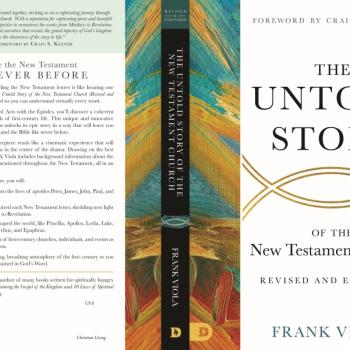 I identified myself as a Witch long before I read J.K. Rowling’s Harry Potter books. They certainly did not influence me to become a Witch. Yet, I believe that certain “witchy” aspects of the books, and later the films, drew me into the wonderful wizarding world, and once there, these stories became a sort of modern mythology for me. Some Witches choose to avoid Harry Potter for fear that they present witchcraft in a trivial way. Many Witches are quick to emphasize that these are works of fiction that do not show a realistic portrayal of Witchcraft as a religion. As Witches, Wiccans, and Pagans work to establish religious legitimacy, few want outsiders to confuse their reality with fiction. However, the books, films, and merchandise are especially popular among Witches. While not claiming the magic of the wizarding world as realistic, the Pagan community enjoys the fantasy world and many do find spiritual insight in the books and films. As Harry Potter fans count down the days to the release of the first installment of the final film, The Deathly Hallows: Part One (which opens nationwide on November 19), I would like to share with you some deeper interpretations of some aspects of this popular story about witchcraft.
I identified myself as a Witch long before I read J.K. Rowling’s Harry Potter books. They certainly did not influence me to become a Witch. Yet, I believe that certain “witchy” aspects of the books, and later the films, drew me into the wonderful wizarding world, and once there, these stories became a sort of modern mythology for me. Some Witches choose to avoid Harry Potter for fear that they present witchcraft in a trivial way. Many Witches are quick to emphasize that these are works of fiction that do not show a realistic portrayal of Witchcraft as a religion. As Witches, Wiccans, and Pagans work to establish religious legitimacy, few want outsiders to confuse their reality with fiction. However, the books, films, and merchandise are especially popular among Witches. While not claiming the magic of the wizarding world as realistic, the Pagan community enjoys the fantasy world and many do find spiritual insight in the books and films. As Harry Potter fans count down the days to the release of the first installment of the final film, The Deathly Hallows: Part One (which opens nationwide on November 19), I would like to share with you some deeper interpretations of some aspects of this popular story about witchcraft.
In Harry Potter’s wizarding world, the spell “Alohamora” opens locked doors. Images of keys abound through the first film, from Hagrid’s introduction as “Keeper of the Keys,” to the Gringotts’ goblin asking for Harry’s key to his vault, and then Harry’s journey to capture a winged key in his quest for the Sorcerer’s Stone. While these “keys” all open real, physical locks, the Witch’s ritual keys are designed to open mental and spiritual locks, allowing for personal transformation and change. In this essay, I will analyze specific images from the Harry Potter books and films in the context of contemporary Witches’ ritual practices. (Though many Witches learn ritual through direct instruction and/or observation, dozens of books teach Witches how to create rituals. I have chosen to base my analysis on Ritual Craft by Amber K and Azrael Arynn K, as I believe it to be a comprehensive guide to contemporary Pagan ritual.)
Witches “perform” their identities in many ways, but some very apparent signs are what they wear (magical clothing, a type of costume) and what items they use and honor as sacred (magical tools, a type of prop). Though these “witchy” performance elements may seem superficial, many people who practice Witchcraft are attracted to the paraphernalia of the fantasy witch image: the pointed hat, the broom, the cauldron, the cape, cloak, or robe, and even the magic wand. While most do not choose to dress up in this “witch” costume every day (or even most days), they enjoy the iconography, and it forms an aspect of their performance of religious identity. Ritual clothing and magical tools may seem like nothing more than theatrical costumes and props, but for a Witch they can function as valuable “ritual keys,” allowing a Witch to focus his or her mind on magical work.
I must clarify that I am in no way arguing that the Harry Potter books “promote” Witchcraft or should be avoided by people who have other religious beliefs. I do not claim that J.K. Rowling is a Witch or that her stories teach the religion of Witchcraft. She has stated many times that she believes the magic in her stories is strictly fiction. Please note that throughout this essay, I distinguish modern, religious Witchcraft from fantasy “witch” images through the use of capitalization. Also, though most practitioners use alternate spellings like “magick,” I am following the example of scholars including Magliocco and Pike who choose to use the traditional spelling except in direct quotes.
I also do not argue that all Witches or Wiccans will view these texts in the same way. I am biased toward Wicca, as my primary training and personal inclinations are mostly Wiccan, though not all Wiccans think alike. The community of Witches cannot be generalized as a monolithic entity. Nor will I argue that Witches are the only community that creates identity through the Harry Potter witch and wizard images. The books and films have been acclaimed by fans from all faiths. However, I read these images through my specific perspective, though other identity groups (even within the larger Pagan or Wiccan communities) could read these same images in drastically different ways. I hope this essay allows Witches to consider why they resonate with the stories (or why they might consider giving them a chance), opening the mind to a new perspective of Harry Potter.




